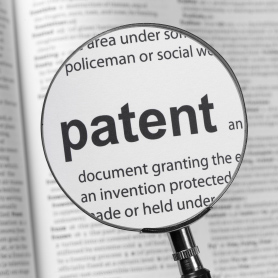India adheres to the Paris Convention (1883-1976), the PCT Treaty (1970), and the Budapest Treaty for the International recognition of the deposit of microorganism for patent purposes of 1977. Since from 1967, India is also a member of WIPO.
At national level, India enacted a law on patents (Patent Act, dating back to 1970, with the last amendment in 2005) and a regulation on patents (Patent Rules of 1972, with last amendment in 2006).
As well as for the most important national institutes, in India patent validity requirements for a patent application are:
Novelty
Inventive Step
Industrial application
Patents for utility models in India are not recognized, but the patent of addition may be a suitable replacement bearing in mind the need to have a basic invention protected by a regular deposit. The duration of a patent in India is 20 years from the filing date, while, as mentioned above, the duration for a patent of addition shall be equal to the remaining years of the parent patent.
The land area of India (about 3.2 million km ²) is served by the Indian Patent Office (IPO) through four offices located in Kolkata, Mumbai, Delhi and Chennai. While an Indian citizen has to file a patent application with the nearest office to his residence (or business location in case of legal entity), an alien may convey the choice of electing a representative office which has its operational headquarters closer to the Office.
Statistics compiled by local colleagues quote the Mumbai Office as the most efficient for practices involving electrical solutions (or electronic), mechanical and chemical. The Office of Chennai proves to be the quickest to questions regarding biotechnological solutions.
Within India you can file your patent application in one of the two official languages of procedure: Hindi or English. In the event that the invention is not completely defined, but it is necessary to have a filing date, you can deposit the so-called provisional application. The provisional application may contain only a provisional description (showing only the nature of the invention without the patent claims) and must be followed, within twelve months from the date of filing, with a regular patent filing. The timing of grant of a patent in India ranges from 3 to 5 years depending on the complexity of the case, if and how much the Patent Office is busy and the willingness of the owner to comply with the requests of the Office and/or procedural deadlines as soon as possible and in any case not near the term provided by law.
Once the request is fulfilled, the Office shall carry out an initial quick review to check the fulfillment of the formal requirements (e.g. If the inventor has delivered the documents necessary to be provided, if the enquiry contains all parts of the regulation, if the object is something explicitly unenforceable, etc.). A unique feature of the Indian procedure is that the patent holder must, within six months from the date of filing, by means of the local elected representative, file a declaration indicating in detail the corresponding parallel applications filed abroad (connected to the newly settled) belonging to the same patent family.
After the filing of the request, an applicant must ask for a substantive examination (also known as RFE Request For Examination). This request may be made within the time limit of 48 months from the date of filing of the application. However, there is an option for express/expedited publication/procedure at a higher fee, which can cut short the time for publication substantially. For this reason, the variability of time for awarding questions in India also depends on the time of the request of RFE. After submitting the request for substantive examination, the examiner shall prepare and provide to the holder of the application a report (also known as FER First Examination Report) containing comments on the novelty of the invention and more extensively for patentability. The timing and delivery of the opinion are about two years from the date of RFE. Received the report of examination, the holder of the patent application has 12 months to overcome the examiner’s objections. Since it is not excluded that the examiner may, in an initial replica, issue a new refusal, it is in the interest of the holder of the application provide a reply to FER as soon as possible (in this case, the corresponding advise to reply to FER within three months from receipt). The grant of the patent is issued once successfully overcomes all the objections contained in the FER.
How to enforce patent rights
The fault occurs in India whenever someone manufactures, sells or imports a patented product or process patent, or manufactures, sells or imports a product directly obtained by the process. In this case, the best way to fight infringement activities is to file a case. The case can only begin with the granted patent and within a period of 3 years from the date of acknowledgement of the episode of counterfeiting by the patentee. Such cases in India have a procedural duration that varies from three to five years, depending on the complexity of the case. The trial can be established at a District Court as well as at the High Court.
The case may be rooted:
In the neighboring Court at the place where the infringer has his place of business, the head of a business unit, or where he works.
In the neighboring Court at the place where the infringing goods are manufactured or sold.
However, in the event that the called party in case requires the invalidity of the patent, the case is then transferred to the High Court.
The remedies available for the patentee during a lawsuit for infringement are:
Ex parte Interim Injunction – depending on the jurisdiction of the Court, the Indian courts may grant an interim injunction, at the preliminary trial of the case or while the case is being admitted by the Court, provided the owner of the patent/patentee shows sufficient evidence to the Court/prima facie case for the grant of interim injunction in favour of the patentee whereby the sale/circulation of the counterfeited products can be restrained.
Precautionary measures through which the Court may require a search of the premises of the counterpart of counterfeit goods or seizure thereof.
Since a lot of requests for injunctive relief are more and more frequent, for territorial jurisdiction of district courts is recommended to follow an ordinary ritual requiring an accelerated procedure rather than an injunction. This is because the district courts are often brought to the long legal contexts/legal considerations with its decisions (for admission or rejection of injunction) issued very often without going into the technical merit of patent infringement.
THE STATEMENT
In India, after the grant of the patent, every March 31st the patent holder has an important appointment: the statements of working.
The statements of working are an account of the exploitation of the patent by the patentee or, otherwise, the acknowledgement of the owner to make available to third parties the right to apply for a patent license.
This statement shall indicate whether the invention was produced in India. The statement continues by indicating whether the patent was licensed or sublicenses and ending with the formulation of an opinion on meeting the demand for Indian market. Ignoring this statement may result in the holder with a fine of up to 1 million rupees (about € 13000) while providing false information may result in the holder with a prison term of up to six months, or an economic penalty, or both.
To know more about this topic, sign up for our newsletter by writing an email to info@dandreaparteners.com
Disclaimer
This article is intended solely for informational purposes and does not constitute legal advice. Although the information in this article was obtained from reliable official sources, no guarantee is made with regard to its accuracy and completeness. Copyright 2016
Wechat: dandreapartners







